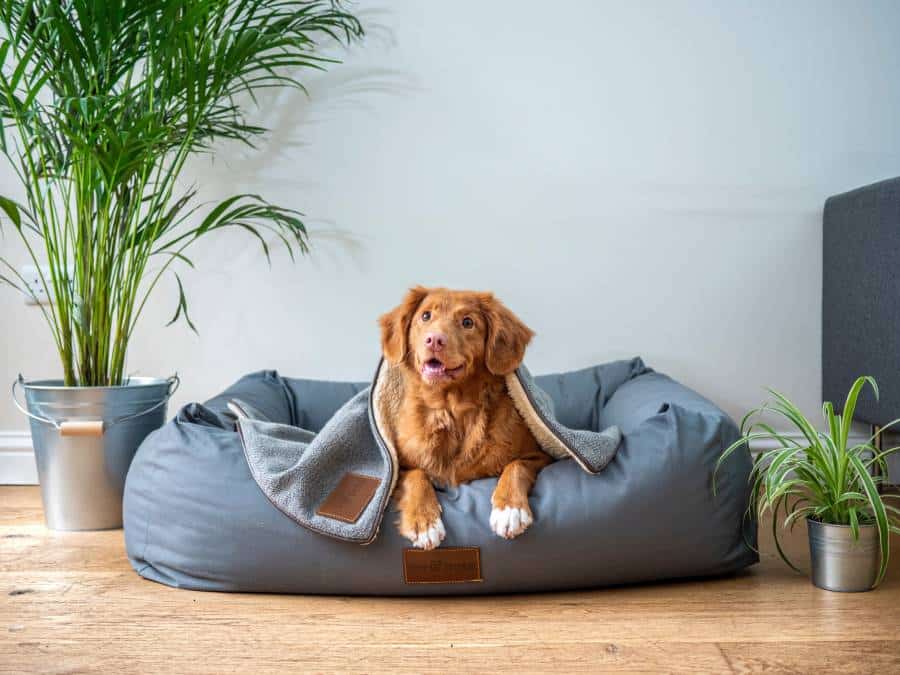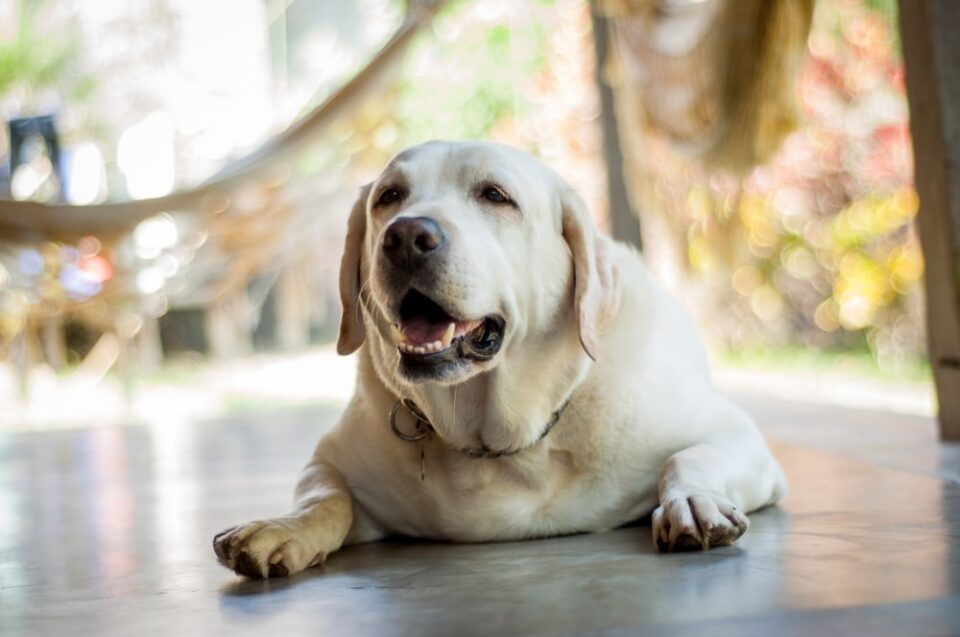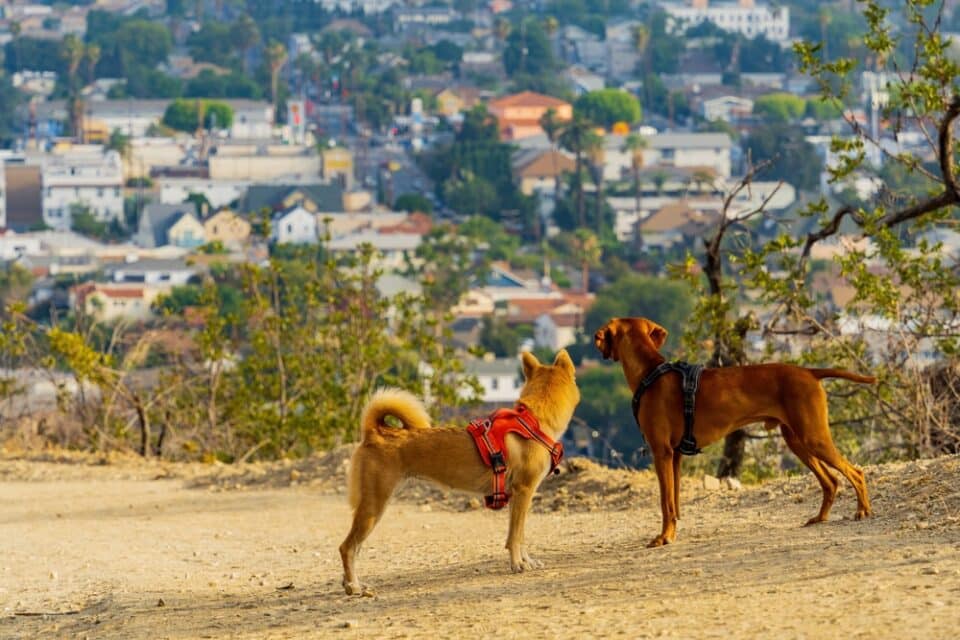Pet Care
8 min read
8 Tips for Traveling with a Pet
Published on Jul 5, 2023

For pet owners parents eager to hit the open road, many of us envision the glee on our pets’ faces when diving into the lake at sunset or romping through a fresh coat of snow on New Year’s morning.
But for every delight travel brings, there are just as many arrangements to make so that our animal companions can stay comfortable. From keeping up with vaccinations for disease control to pre-planning bathroom breaks on a long international flight, questions can be complex (“How on earth do I get this portable litter box to collapse?”) or straightforward (“Exactly how do I travel with my dog?”)
Wherever your wanderlust is taking you—and however you plan to get there—these 8 tips are an excellent place to start to ensure you both make it home healthy and happy.
#1 Assess Their Individual Needs
If you’ve ever gone on a family vacation or a weekend getaway with a new partner, you know that personality is a decisive factor in determining whether travelers stay happy (or crabby). Traveling with a pet is no different.
You know your pet best, so be sure to take stock of their needs when making your air travel and accommodation arrangements. You can start by asking:
- Does my pet need plenty of exercise to stay happy and healthy?
- Does my pet follow a strict diet or take any medications regularly?
- Is my pet a “people person,” or are they more selective with human companions?
- Does my pet feel anxious when they’re left alone for too long?
- Does my pet adapt easily to new environments and situations?
- Does my pet become aggressive when they feel threatened or uncertain?
No matter what personality traits make your pet them, prioritizing their unique needs can help you plan out strategic, high-impact ways of making them feel comfortable both in transit and at your destination.
#2 Prepare Them For Travel In Small Doses
Whether your pet is an explorer at heart or shyer about new experiences, taking them out for mini trips is an excellent way to prime them for your upcoming trip.
This could look like:
- Letting your cat or dog become familiar with their pet carrier before taking them on the road
- Taking your pet dog for a walk in a new park or neighborhood
- Taking a day trip out of your city by rail to see how they like being in a train passenger cabin
If your pet hasn’t ventured beyond their home before, you may want to get their firsthand opinion of the outside world before bringing them on your trip.
Try introducing them to new, different environments, like by the local seashore or a beer garden on a Friday night. They may thrive, or you may discover they’re more reactive than expected. Either way, you can decide whether they’d prefer to join you or stay home with a sitter.
#3 Check Your Travel Provider’s Pet Policies
Planes, trains, automobiles, and the like all have their own rules and accessibility guidelines welcoming a live animal aboard.1 Whether or not your pet is permitted in vehicles may depend on:
Their service animal or emotional support animal status – If your pet provides you with physical or mental health-related support, it’s important to ensure their status is legally recognized before booking your ticket. That said, even if you have documentation to prove your pet’s status, a good rule of thumb is to familiarize yourself with the unique live animal compliance policies stipulated by your travel provider.
- Their size or weight – Learning how to fly with a pet can change from flight to flight, but most airlines consider pets to be “cargo”—which means they’re subject to the same size and weight limitations imposed on your checked baggage. It’s very important to read up on your airline’s pet-carrying policies before arriving to avoid any surprise partings that confine your checked pet below the plane.1
- Operator preference – If you plan to hire a car service to shuttle around on your travels, always check in with your driver to tell them you have an animal with you before they pull up. Rideshare apps like Uber and Lyft leave pet policies up to drivers’ discretion—but you may find that even a quick “cat alert!” text can be a meaningful gesture that a fur-averse driver is willing to risk a few sniffles for.
#4 Stay Up-to-Date On Vaccinations
No matter how long you’re planning on whisking away with your pet, ensuring their core vaccinations are current with disease control before you leave is crucial.
Cats should be up-to-date with:2
- Feline distemper
- Feline calicivirus
- Feline herpes type 1
- Rabies
Dogs should be current on these core vaccinations:2
- Canine parvovirus
- Canine hepatitis
- Distemper
- Rabies
When venturing well beyond your pet’s usual stomping grounds, it’s also important to run your destination by your veterinarian. They can tell you whether your pet should be inoculated against other diseases they wouldn’t normally encounter at home.
If you’re unsure whether your pet is current on their core and non-core vaccines, plan sufficient time to scan their records and book any vaccination appointments (if necessary). Depending on your veterinary care provider, you may have full, easy access to these records through an online portal.
#5 Make Sure They’ve Got Identification
In the event that your pet gets separated from you while you’re away, it’s crucial they’re sporting some sort of identification. Many owners rely on the traditional collar for their dogs or cats, which details the owner’s name, contact information, and address.
However, there are some drawbacks to this analog method. For instance, especially active pets can slip out of their collar occasionally, and venturing out of the country can make it harder for someone to contact you (especially if you don’t plan on buying an international phone plan).
Microchips are exceptionally effective at helping lost pets reunite with their owners again, enabling them to be identified with a simple scan. One study illustrated that microchipped lost dogs have double the chance of finding their way home again, while microchipped cats increased their likelihood of returning twenty-fold.3
#6 Invest In Pro-Pet Travel Gear
Whether you’re a chronic over-packer or have been known to be underprepared on the road, pet parents often slip into a “more is more” mentality when they’re about to jet off with their pet. However, whether you’re juggling a connecting flight or have several destinations on your itinerary, it’s usually better to pack smarter rather than to pack more.
Ensure your dog stays nourished, comfortable, and chipper by putting these pet travel staples on your packing list:
- A comfortable, collapsible carrier
- Portable water bottle (air travelers, just be sure it’s empty before you go through security)
- Familiar bedding from home, or an old piece of clothing that carries your scent4
- Two to five of their favorite playthings
- Treats for rewarding good behavior
- Plenty of waste bags (for dogs)
- A portable litter box kit (for cats)
Finally, be sure your pet has enough of its usual food to adhere to their normal diet while you’re en route together. Heading towards a destination that’s unlikely to supply their usual food is one reason we’d give you the green light to overpack.
#7 Pre-Plan Bathroom Breaks
If you’re planning on traveling for more than six to eight hours, it’s safe to say your pet will have to go while you’re on the go. However, your pet’s ability to control its bladder is highly contingent on:
- Their age – Generally, older dogs and puppies have less tenacious bladder control. If your dog is a senior or a junior, be sure to plan adequate bathroom breaks so that they can go three times per day, minimum.
- Their breed – Breed (and, correspondingly, dog size) necessarily influences how frequently your pet might urinate. It’s also a major factor in determining how often dogs urinate to mark their territory (the golden rule is: smaller dogs target their urine more, larger dogs do so less).5
- Their stress levels – Thanks to genetics, more tender or nervous pet personalities may be more prone to urinate when they’re feeling anxious. Anxiety may be caused by stressors like noise (affecting 32% of all dogs), new situations (11%), human strangers (15%), and other dogs (17%).6
It’s important to incorporate pet bathroom breaks into your travel itinerary ensure your pet has adequate opportunities to do their business. Similarly, you may want to plan for spells of submissive urination or excitement urination by keeping pee pads or odor removers on hand while you’re en route.7
#8 Prioritize Quality Time
Once you’ve arrived at your destination, be sure to cordon off some time as soon as you land to help your pet to help them become accustomed to their new environment.
Cats, for instance, will need some time to take ownership of their new territory. You can help them feel more at-ease by adhering to a flexible but firm quality time routine, like nightly brushes while watching TV.
For dogs, it’s important to ensure they’re getting adequate exercise daily. You might wake up 20 minutes early to take them on a neighborhood tour, or you may already be planning to let them join you on an active outdoor expedition.
Bear in mind that, if you do plan on spending time outdoors, you’ll need to be prepared to handle any medical issues relating to the elements and your specific breed of pet. For instance, French bulldogs are particularly vulnerable to heat stroke, which makes keeping ample hydration on hand crucial for staying cool.8
Planning a trip with your pet is a significant undertaking, and there are many factors to consider—from their unique needs and personality traits to their health and safety. For every blissful beach jaunt or lakeside frolic, there are logistics to manage and preparations to make. However, with the right information and proper planning, you can ensure a comfortable, enjoyable trip for both you and your furry friend. Prioritize their unique needs, help them adapt to travel, stay up-to-date with their vaccinations, ensure they have proper identification, invest in travel-friendly pet gear, pre-plan bathroom breaks, and don’t forget to carve out some quality time with them.
Papaya Pet Care: Putting Pets First, Anywhere
Lastly, we recommend making an appointment with Papaya Vet Care before you depart and after you return. A veterinarian can ensure that your pet is in good health and ready for the journey. So, whether you’re planning a summer vacation or a winter retreat, let’s make sure your pet is as prepared as possible. Contact Papaya Vet Care today to schedule your pre- and post-trip appointments. Your adventure awaits!
Sources:
- Travel and Leisure. Traveling With Pets: Your Guide to Flying or Driving With a Furry Friend. https://www.travelandleisure.com/trip-ideas/pet-friendly-travel/traveling-with-pets
- American Society for the Prevention of Cruelty to Animals. Vaccinations for your pet. https://www.aspca.org/pet-care/general-pet-care/vaccinations-your-pet
- American Veterinary Medical Association. Characterization of animals with microchips entering animal shelters. https://avmajournals.avma.org/view/journals/javma/235/2/javma.235.2.160.xml
- Condé Nast Traveler. How to Travel Safely With Pets. https://www.cntraveler.com/story/how-to-travel-safely-with-pets
- The Wildest. Do Small Dogs Pee More Often? https://www.thewildest.com/dog-behavior/frequency-urination-related-dog-body-size
- Science. Is your dog anxious? Genes common to its breed could play a role. https://www.science.org/content/article/your-dog-anxious-genes-common-its-breed-could-play-role
- The Spruce Pets. How to Stop Submissive or Excitement Peeing in Dogs. https://www.thesprucepets.com/fixing-submissive-excitement-urination-1118271
- Daily Mail. Flat-faced dogs are TWICE as likely to get heat stroke because their short snouts make it almost impossible for them to cool down by panting. https://www.dailymail.co.uk/sciencetech/article-8422757/Flat-faced-dogs-TWICE-likely-heat-stroke.html













